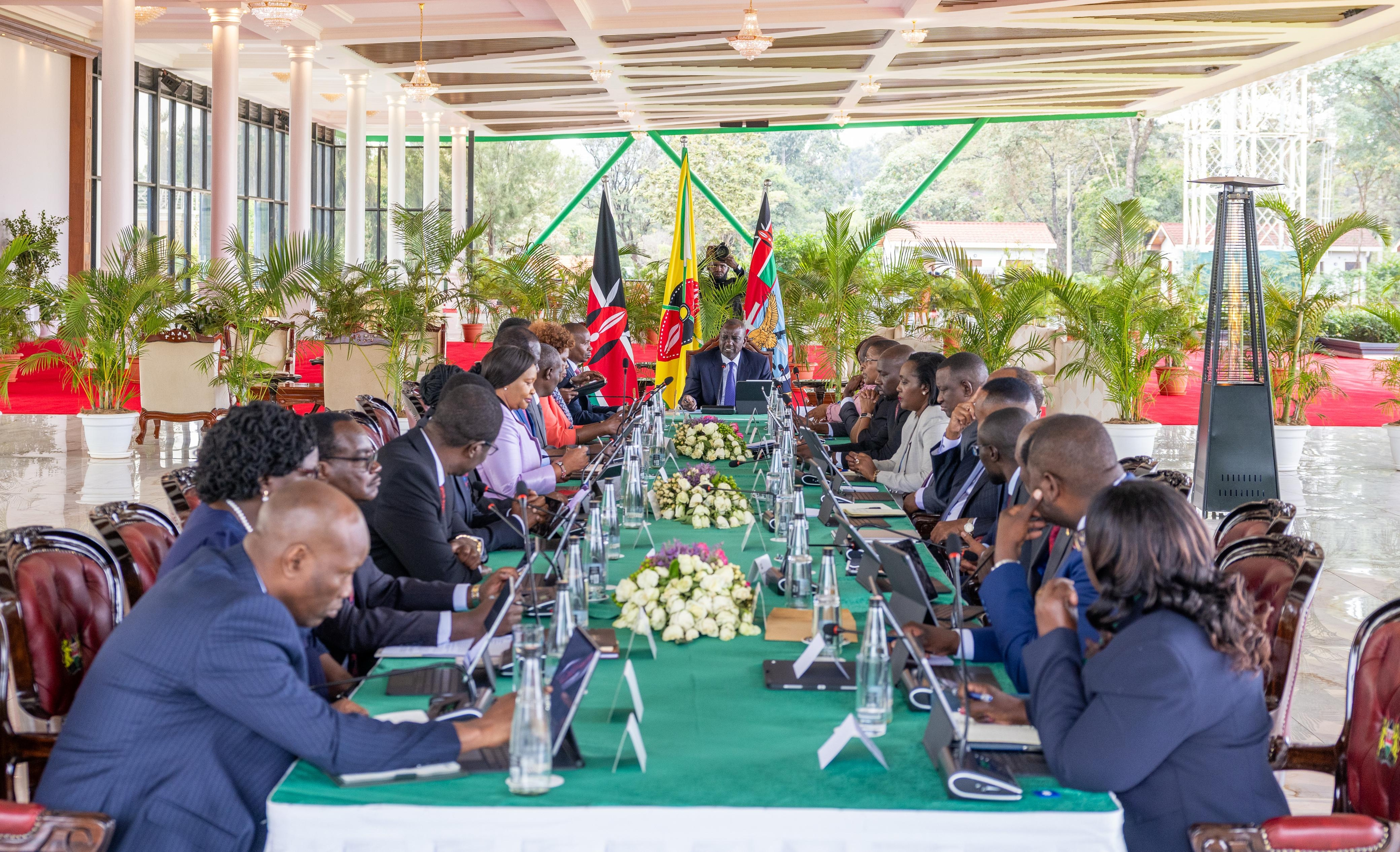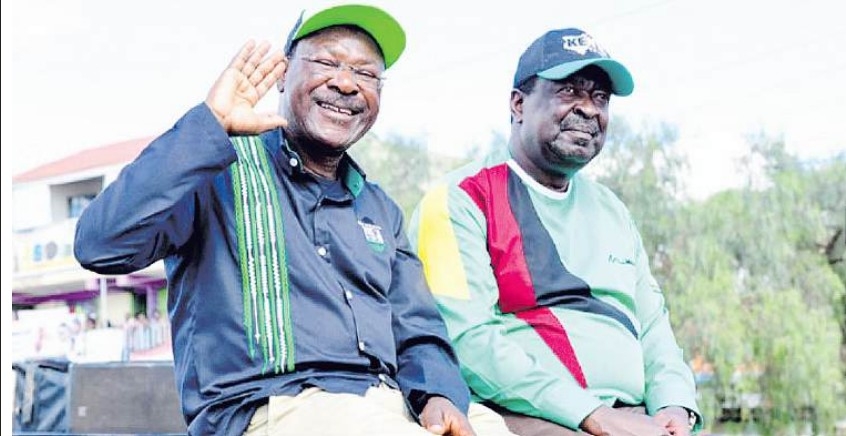It is 8am and Lepita Lesaoli, 70, is lost in thoughts gazing at the open skies.
He cannot understand why they have been unable to get rain, pushing them to the brink of death.
In the village, stench from carcasses of cattle is felt with some of the carcasses seen through the bushes.
Flies buzz around, hyenas are no longer interested in meat.
Most children are malnourished.
“We have lost nearly all our livelihoods and we do not know when rains will come,” Lesaoli says.
He says some families have had to marry off their daughters as they consider them prime sources of wealth that can be disposed of easily.
Some girls are no longer going to school.
Lesaoli says before the drought, he had 200 goats but now he has 50.
Cattle remain a symbol of wealth and pride for the Maasai people.
Historically, the community depends on their livestock to meet all of its basic needs.
Their traditional diet relies on milk and dairy products, lean beef, cattle fat and blood.
Lesaoli says most goats are emaciated and weak and might die at any moment.
He says they are forced to sell those that are still alive to buy pasture for the remaining ones but in bad shape.
Lesaoli says they have not been provided with pasture.
He says they only hear of the government’s livestock off-take programme, meant to salvage livestock farmers from incurring huge losses during the drought season.
Lesaoli says he has witnessed droughts cycles since 1984.
“The drought is coming after 20 years and it is worsening, we have not received rains for three years,” he says.
Naibunga Lower Conservancy Board of Management chairperson Mathew Naiptari says wildlife has not been spared and insecurity has been ravaging parts of Laikipia.
Naiptari says they have a programme with private conservancies where during the drought spell, they pay some amount of grazing fee to graze on their land.
“This is done more systematically. However, our neighbours have been forcefully making their way into these arrangements,” he says.
“In the II Ngwesi Community Conservancy, we stumbled on one female elephant that died after it was shot.”
The jumbo died three days after failing to access immediate medical attention due to the shortage of vet officers.
Another jumbo died in the neighbouring Borana Conservancy in April after it was shot by invaders.
In the Tsavo ecosystem, Kenya has lost 78 elephants in nine months between 2021 and now, due to drought.
On May 18, a new report showed that one person is likely to die of hunger every 48 seconds in Kenya, Ethiopia and Somalia, according to estimates by Oxfam and Save the Children while highlighting the world’s repeated failure to stave off preventable disasters.
The report says more than a decade since the delayed response to the 2011 famine that killed more than 260,000 people in Somalia, half of them children under five, the world is once again failing to avert hunger in East Africa.
Today, nearly half a million people across parts of Somalia and Ethiopia are facing famine.
In Kenya, 3.5 million people are suffering from extreme hunger. Urgent appeals are not well funded and the war in Ukraine is worsening the region’s escalating hunger crisis.
The number of people experiencing extreme hunger in the three countries has more than doubled since last year–from over 10 million to more than 23 million today.
This is against a backdrop of crippling debt that more than tripled in under a decade.
The report, Dangerous Delay 2: The Cost of Inaction, in partnership with the Jameel Observatory, examines the changes in the humanitarian aid system since 2011.
It finds that despite an improved response to the 2017 East Africa drought when widespread famine was averted, the national and global responses have largely remained too slow and too limited to prevent a repeat today.
In its May updates, the Famine Early Warning Systems Network projected a likelihood that just like the long rains season, the October to December short rains season will be below average.
This will set the stage for an unprecedented five-season drought with an estimated four to five million Kenyans needing humanitarian food assistance.
FEWSNET shows this will increase the severity and scale of food assistance needs into 2023, and a significant and sustained scale-up of humanitarian assistance will be needed to save lives and livelihoods.
The Arid and Semi-Arid Lands Humanitarian Network—a network of 30 local and national organisations from the most affected dryland communities in Northern Kenya—has also raised concern about the current situation.
“We are currently in the fourth consecutive failed rain season and are witnessing a worsening crisis with famine looming. The situation has deteriorated rapidly since we first triggered our response to the drought in July 2021,” Ahmed Ibrahim, the Network’s Convener said.
“Earlier action would have helped prevent the escalation of the crisis, reduced suffering and would have cost less than the large-scale humanitarian response that is required now.”
Entrenched bureaucracies and self-serving political choices continue to curtail a unified global response, despite improved warning systems and efforts by local NGOs, the report finds.
“This drought will spiral out of control if we don't act. The national and county leaderships must respond and invest in food security, diversified livelihood options, and stronger social protection systems as pillars of resilience to cushion Kenyans who face hunger,” Oxfam in Kenya country director, John Kitui said.
“Institutions need to listen to early warning systems and recommendations by local organisations who understand local realities to mitigate future calamities and to foster timely humanitarian responses.”
The report sheds light on the continued failure of donors and aid agencies to prioritise local organisations at the forefront of the crisis response, which slowed down the response.
Climate-induced drought, compounded by conflicts forcing people out of their homes, and Covid-19 economic turmoil, has decimated people’s last ability to cope.
The Ukraine conflict has also driven already soaring food prices to their highest level ever recorded, making food unattainable for millions.
According to the government, at least 1.6 million livestock have died due to drought.
“The situation is devastating. Human beings and livestock are at risk of dying, children, pregnant mothers and the elderly in some parts of Marsabit and Samburu are reported to have died,” Jane Meriwas, the director of Samburu Women Trust in Kenya says.
“If urgent intervention is not provided now, we are likely to witness more deaths.”
Edited by Kiilu Damaris
“WATCH: The latest videos from the Star”











![[PHOTOS] Ruto present as NIS boss Noordin Haji's son weds](/_next/image?url=https%3A%2F%2Fcdn.radioafrica.digital%2Fimage%2F2025%2F11%2Ff8833a6a-7b6b-4e15-b378-8624f16917f0.jpg&w=3840&q=100)




